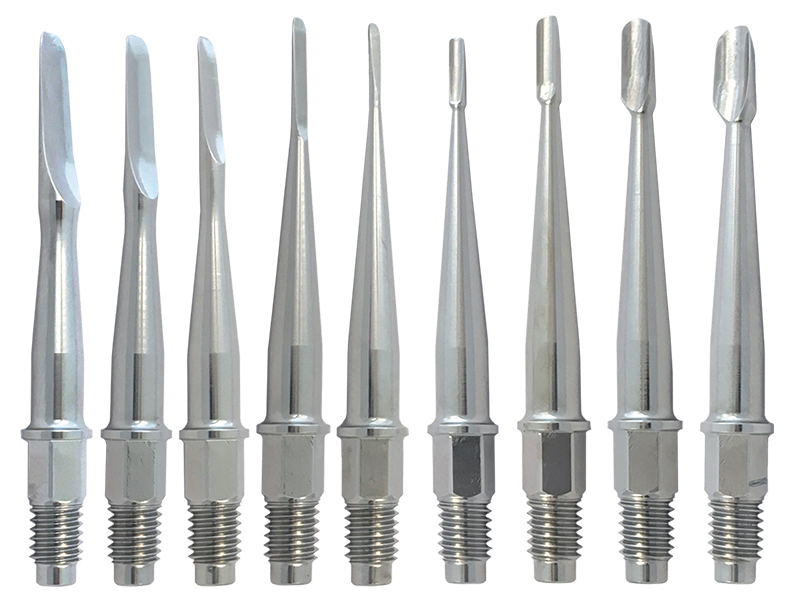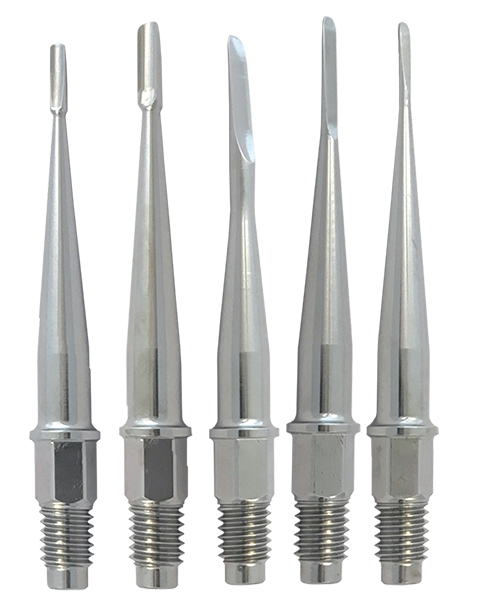We use cookies to make your experience better. To comply with the new e-Privacy directive, we need to ask for your consent to set the cookies. Learn more.
Dental Extractions Don't Need to be Stressful!

Author: Dr. Ivan Crotaz, BVetMed MRCVS, UK General Practice Veterinarian and Designer of Dentanomic Dental Instruments
Dentanomic™ instruments allow for better, faster dentistry; fully guaranteed and supported.
Dentistry can often feel frustrating in general veterinary practice. Working with re-sharpened or simply blunt instruments limits the ability to perform fast, precision extractions. Simply put, surgery is better with sharp blades!
On average, 70-80% of patients that we see have some form of dental disease. That’s a lot of animals in pain that we can help. A lot of the time, though, most of us are not thrilled by the idea of taking on more dental surgery.
How to make your dental surgery fast, predictable and efficient:
Many of us struggle to get the best from our dental procedures. It is possible to make dental extraction just as precise and efficient as soft tissue surgery. By using thin-edged dental instruments and a technique that allows the thin edges to bite into the periodontal ligament, you can make dental surgery predicable and efficient, just like any other surgical procedure.
Dentanomic Blades are extremely thin and contoured to fit directly into the periodontal ligament space, allowing for a precision approach to extractions, by operating on the soft tissue around the tooth.
The aim is to lodge the thin triangular edge into the ligament space, which secures the blade in the correct place so your force is directed straight at the soft tissue.


Figure 1 - Dentanomic 2 mm Luxation Blade (Item # 54545-2)
How do you stop those thin edges from bending or getting damaged?
Here’s the good news! The most efficient way to operate on the tooth is to insert the blade directly between the alveolar bone and the tooth root. That gets you into the periodontal ligament itself. Once within the periodontal ligament space, the blade edge has nowhere to bend – the bone and tooth root themselves will protect the blade edge.
The right technique protects the thin blade edges and simultaneously allows your surgery to be as fast and atraumatic as possible.
How do I learn this technique?


Figure 2 - Link to training session registration
Dentanomic offers live training sessions on Zoom, twice a day every Thursday.
Follow the link on the QR code, or visit www.dentanomic.com/training-guarantee to select the day and time that suits you to book a session slot.
All training is free of charge and you can book as many sessions as you like. No purchase is necessary.
How long does it take to get used to the new technique of operating?


Most surgeons find it takes 1 week to get used to the new technique of using an elevating blade. Luxation instruments can take a little longer and take around 1-3 weeks to get used to. The luxation technique is extremely useful in managing difficult extractions and is well worth learning.
Our satisfaction guarantee covers you over this period. The guarantee is activated once you have attended one of our training sessions. For the first 30 days after purchase, if you bend one of the thin blades while you’re getting used to the new technique, we will replace it free of charge, via your distributor (maximum of one replacement per blade type).
If within 30 days of purchase, you find that you are not satisfied with your Dentanomic instruments, you can return your instruments for a full refund.


Figure 3 - Link to information & satisfaction guarantee
This means that you can start using the instruments without worrying about damaging the instruments. It’s normal to bend a few blades while adjusting to the new technique, but if you’re like me, operating with a thin instrument and a more precise technique is so much better that you won’t want to go back to the old way!
'OK. I get that using thin, sharp blades makes surgery better!
Won’t they get damaged just as quickly as my normal instruments?'
Yes - and no!
Dentanomic instruments have replaceable blades – this makes it easy to keep them in ideal condition. When using a precision technique, the edges last for many procedures. I have been working with them since 2017 and over that time I have changed my way of using them and my advice to other veterinarians.
Originally, we recommended honing (or stropping) the blade edges rather than sharpening them. This is a well established way of looking after a thin edge, while avoiding removing metal. Sharpening a thin pointed edge takes that thin edge off which thickens the blade and is best avoided completely.
Unfortunately, we found that honing only works well if it is performed daily, at precise angles and with precise technique. Guess how often that happens in busy general practice?
Instead, all I do now is change my blades every 3 months, using our auto-replacement system – so that it doesn’t get forgotten.
In my clinic, we typically perform 2 dental procedures per day. At 3 months, our blades are still in reasonable shape, but the edges are beginning to thicken up and slow down slightly. One pack of 9 blades costs just over $300 dollars. This means that we are spending around $2.50-$3.00 per procedure on Dentanomic Blades – a price that we are totally comfortable with given the improvement in speed that we get from the instruments.


How do I go about replacing my blades?
We have an online reminder system to make this blade replacement straightforward. Either register through MAI Animal Health, a distributor representative or visit www.dentanomic.com/reorder.


The reminder system is NOT a subscription service – you set and fully control how often you would like your blades replaced. Blade set replacements will ship and be billed through your normal distributor. If you want to alter, skip or cancel your blade replacements, you can do so at any time.
You will receive an email reminder one week before your blades are due, and then the system will either:
1
Issue a purchase order to your distributor (Midwest, Penn Vet, MAI Animal Health, USI, Victor, Eickemeyer) for your blades to arrive automatically, or
2
Issue an email reminder to you with order codes so you can place an order through your distributor (Patterson, Covetrus, MWI, Serona).
There are 3 options for blade replacements
(your replacement choice can be changed at any time):
1
Replace a full pack of 9 blades every time.
This is what I do – I never have to worry about the sharpness of my instruments.
Full Set includes:

- 4 Elevation Blades:
- 2 mm
- 3 mm
- 4 mm
- 5 mm
- 5 Luxation Blades:
- 1.5 mm
- 2 mm
- 3 mm
- 4 mm
- 5 mm
2
Replace the smallest 5 blades every time.
This is for a practice that operates mainly on cats and small dogs. Your larger blades will be included in your initial Dentanomic set, but you won’t use them often enough to blunt them. You can always change them individually as you need to.
Set includes:
- 3 Luxation Blades:
- 1.5 mm
- 2 mm
- 3 mm
- 2 Elevation Blades:
- 2 mm
- 3 mm
3
Alternate a 5 and 9 blade replacement.
This is for a practice that has moderate numbers of larger patients. You will use the large blades frequently but not as often as the smaller blades. Every other blade replacement order will be for the larger set with all blades.


Surgeons who use Dentanomic instruments report between 30 and 50% improvement in extraction speed.
To make Dentanomic work for you, there are two vital things:
1
Dentanomic instruments are designed for a precise, fast surgical technique. Before you start to use them it’s important to learn this technique at one of our training sessions and take advantage of our full guarantee.
2
Dentanomic instruments work well because the blade edges are so thin. Make sure that you register on the blade replacement program and replace the blades appropriately for your clinic. When you auto-replace the blades, you'll never have to use a blunt instrument again.











